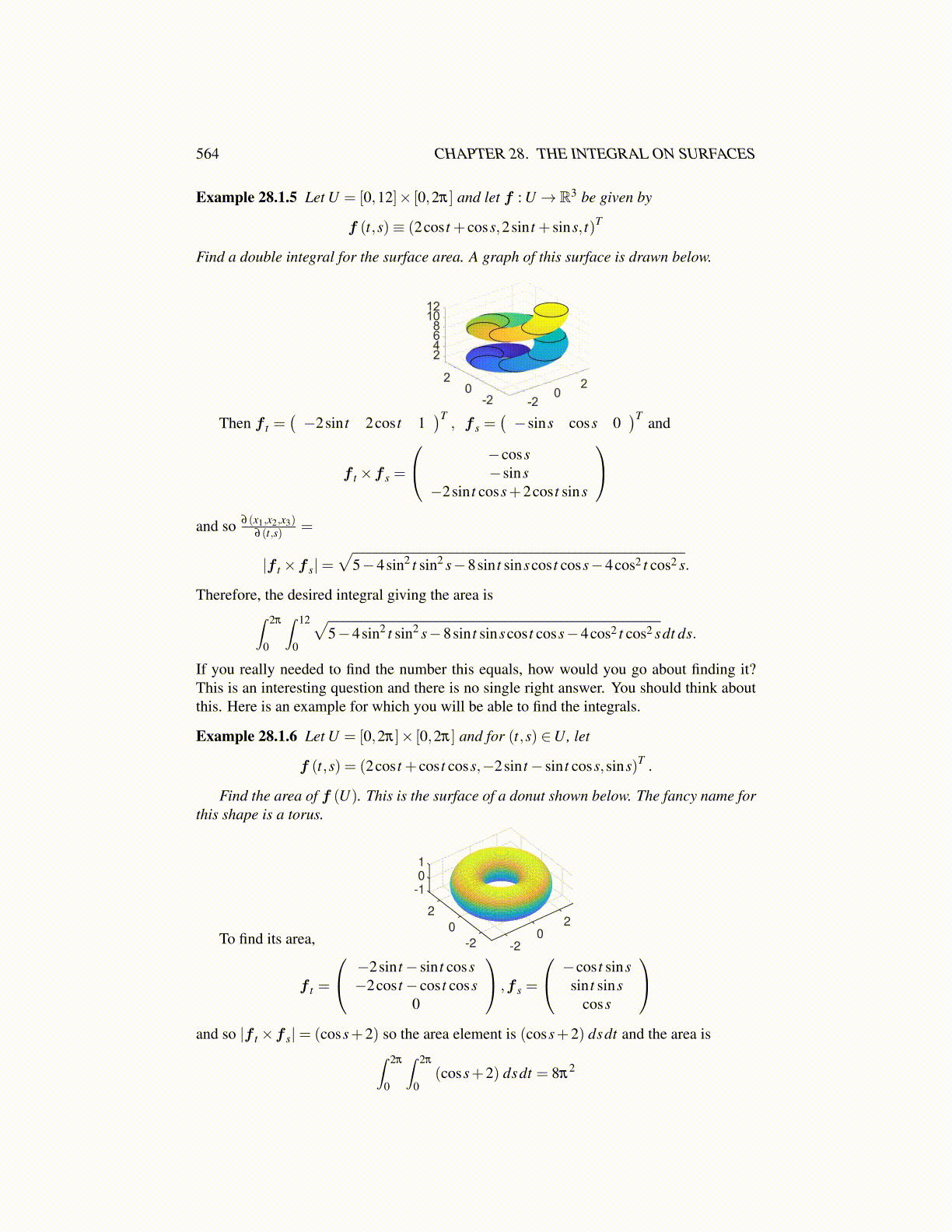
564 CHAPTER 28. THE INTEGRAL ON SURFACES
and the increment of surface area is then∣∣∣∣∣∣ −2sinφ sinθ
2sinφ cosθ
0
×
2cosφ cosθ
2cosφ sinθ
−2sinφ
∣∣∣∣∣∣dθdφ
=
∣∣∣∣∣∣ −4sin2
φ cosθ
−4sin2φ sinθ
−4sinφ cosφ
∣∣∣∣∣∣dθdφ = 4sinφdθdφ
Therefore, since the hemisphere corresponds to θ ∈ [0,2π] and φ ∈ [0,π/2], the integral towork is ∫ 2π
0
∫π/2
0
[12(2sinφ cosθ)2 +
(12(2sinφ cosθ +2cosφ)
)·
(2sinφ sinθ)+12(2sinφ sinθ)2cosφ
]4sin(φ)dφdθ
Doing the integration, this reduces to 163 π .
The important thing to notice is that there is no new mathematics here. That which isnew is the significance of a flux integral which will be discussed more in the next chapter.In short, this integral often has the interpretation of a measure of how fast something iscrossing a surface.
28.6 Exercises1. Find a parametrization for the intersection of the planes 4x+ 2y+ 4z = 3 and 6x−
2y =−1.
2. Find a parametrization for the intersection of the plane 3x+y+z = 1 and the circularcylinder x2 + y2 = 1.
3. Find a parametrization for the intersection of the plane 3x + 2y+ 4z = 4 and theelliptic cylinder x2 +4z2 = 16.
4. Find a parametrization for the straight line joining (1,3,1) and (−2,5,3).
5. Find a parametrization for the intersection of the surfaces 4y + 3z = 3x2 + 2 and3y+2z =−x+3.
6. Find the area of S if S is the part of the circular cylinder x2 + y2 = 4 which liesbetween z = 0 and z = 2+ y.
7. Find the area of S if S is the part of the cone x2 +y2 = 16z2 between z = 0 and z = h.
8. Parametrizing the cylinder x2+y2 = a2 by x = acosv,y = asinv,z = u, show that thearea element is dA = adudv
9. Find the area enclosed by the limacon r = 2+ cosθ .
10. Find the surface area of the paraboloid z = h(1− x2 − y2
)between z = 0 and z = h.
Take a limit of this area as h decreases to 0.